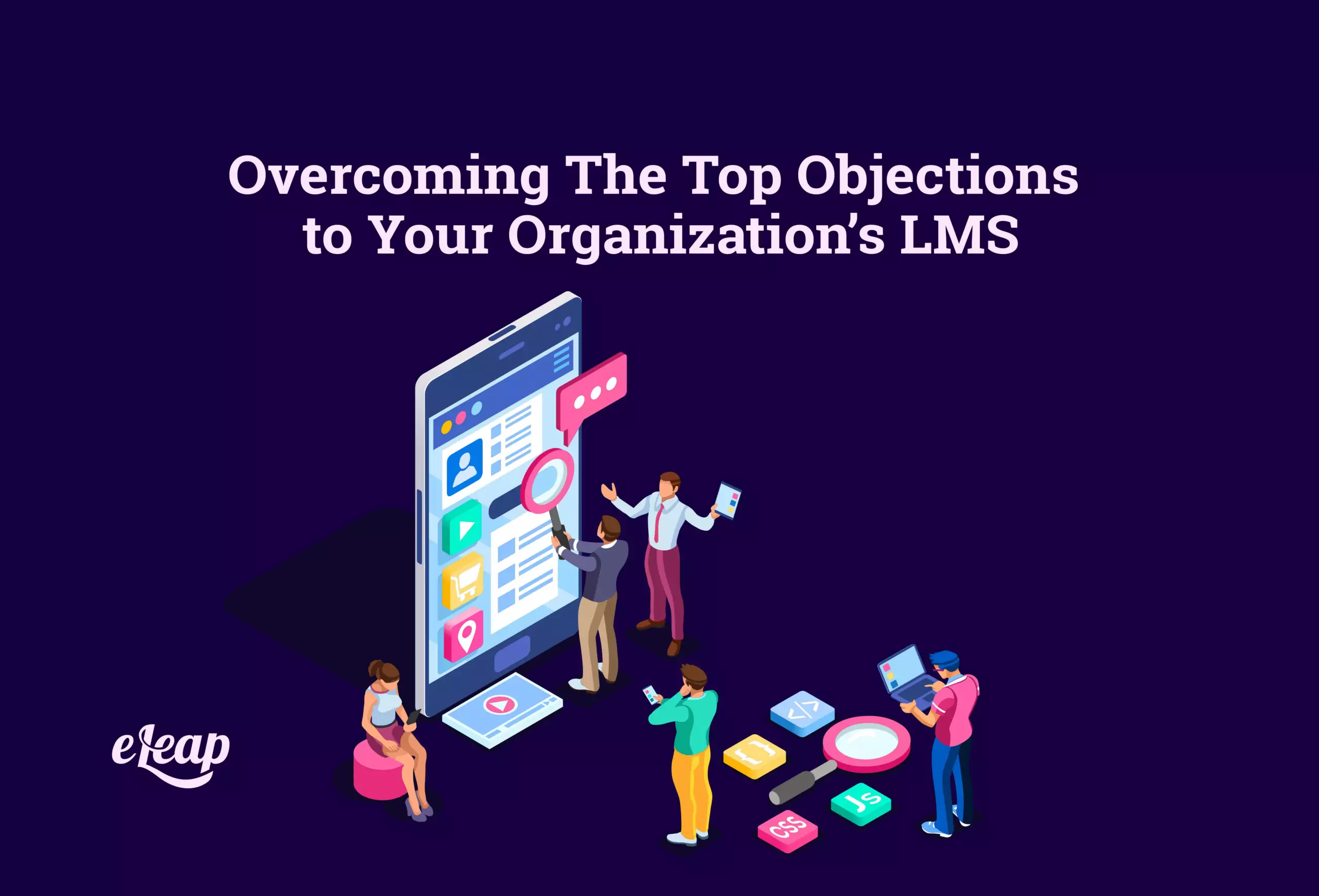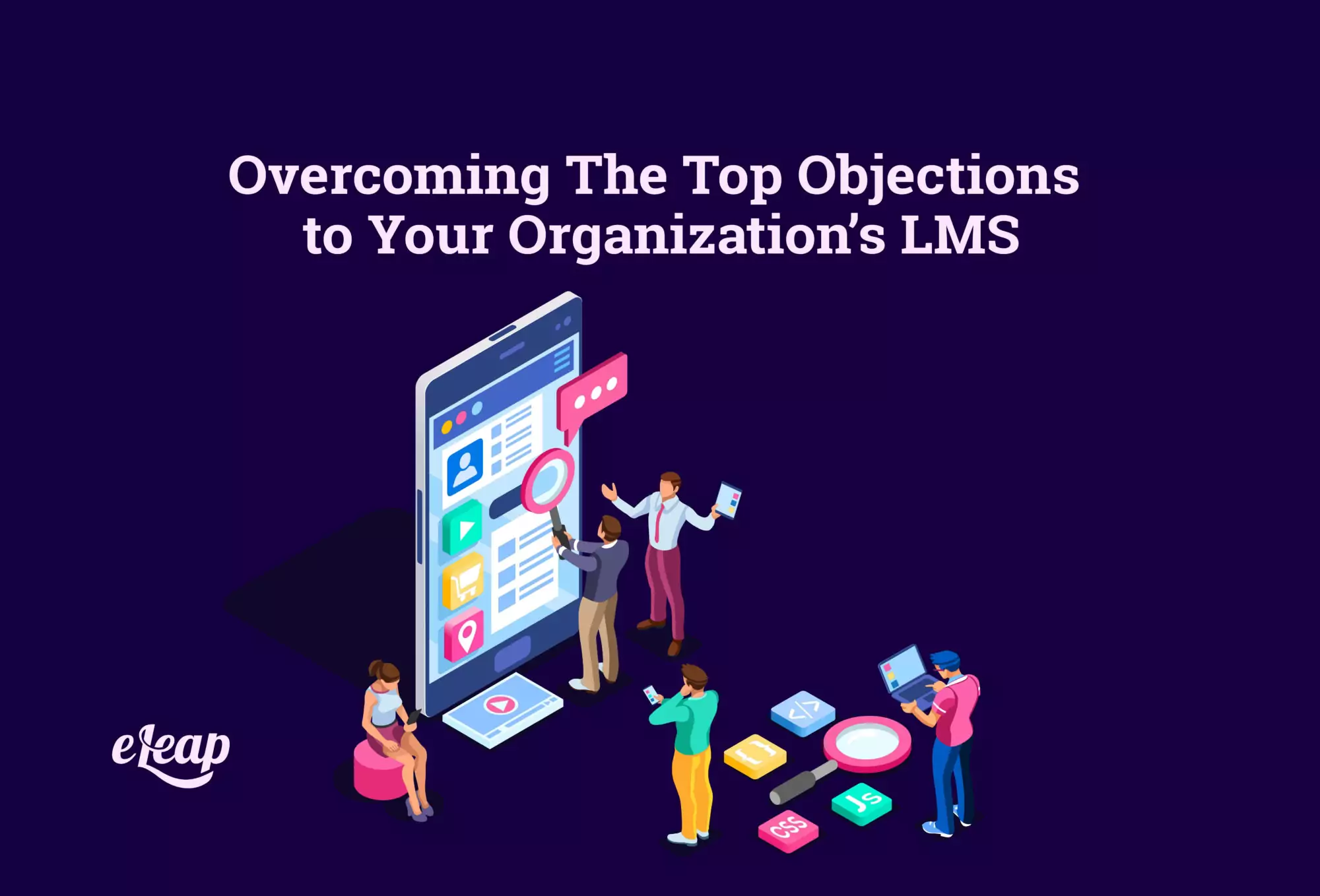Overcoming The Top Objections to Your Organization’s LMS

It’s common knowledge that learning management systems can significantly improve how an organization functions. But when implementing one, it can be difficult to get everyone on board with such a novel system.
When presenting a case for introducing a new LMS, it can feel like an uphill battle. Many executives, especially those in higher positions, perceive new technology as complicating an organization instead of simplifying and streamlining processes. If you’re facing the need to present a case for why implementing a learning management system is a good idea, you’ll need to be ready to fight your corner.
Generally speaking, you need to be well-prepared to demonstrate the value of a learning management system to relevant leaders, decision-makers, and stakeholders. To accomplish this, you must not only be ready to combat objections, but you also need to know what your organization’s pain points are and how your learning management system will cater to them.
To prepare you as well as possible to make your case, let’s talk about some common objections to learning management systems.

The Belief That eLearning Isn’t Effective
Perhaps the most common objection is that eLearning simply isn’t effective enough to justify the cost. In a lot of cases, decision-makers simply haven’t been exposed to eLearning themselves, so they haven’t seen just how beneficial it can be. It’s also common for more contemporary methods to be considered equally, if not more effective, especially in established organizations that have been doing things the same way for a long time.
The truth is, if you use a learning management system the right way, you can significantly improve the retention rate of your learners. More retention helps to improve business performance while utilizing training budgets to their fullest potential. There’s more than enough evidence to suggest that retention and engagement skyrocket when an LMS is implemented.
The Belief That the Effectiveness of Training Is Immeasurable
Assuming you’re pitching to high-powered decision-makers and stakeholders, your target audience is probably all about the numbers when you’re trying to sell them a learning management system. It may seem to them that it’s impossible to measure the return on investment for training and development initiatives, so why put a lot of effort and money into implementing one?
In fact, this belief couldn’t be further from the truth. If you have the right measurement tools and technology in place, you can measure the ROI of training and development easily. If you’re doing training and development the old-fashioned way, you can’t exactly measure your return on investment, so it’s important to note that an LMS puts you in a much better position to measure initiatives compared to traditional training methods.
The Belief That Current Employee Training Is Sufficient
Learning management systems may seem worth the investment to some, but others might be skeptical about their importance. In many cases, a key argument is that your organization is doing just fine without one, so why fix what isn’t broken? It may seem that a learning management system is not necessary unless there have been glaring training gaps and issues.
Despite some training gaps not being immediately obvious, it’s very likely they exist. You should find specific examples of why your current training program doesn’t meet the needs of your learners as you build your case for implementing new eLearning technology.
Problems can easily arise from an outdated training system, particularly when it comes to compliance and safety. This is a compelling point to make, especially if you work for an organization that often has to undergo rigorous compliance training. Failure to comply can cause all sorts of serious issues for a company, and a good LMS can drastically reduce the instances of non-compliance.
The Belief That an LMS Is Too Pricey
If you inquire to upper leadership about potentially implementing a learning management system, you may well have heard the complaint that it’s just too pricey or isn’t feasible with the current budget. But the truth is, just about everything is subject to that objection on some level. Cloud-based, scalable, and subscription-based learning management systems, on the other hand, are often cheaper and also more effective than classroom instruction, particularly over a long period of time.
With the use of an LMS, it’s possible to reduce training costs in general, even if the upfront price of getting set up is expensive. Your organization can save on instructor fees, the requirement to travel to training facilities, and the cost of physical training materials.
In addition to saving your organization money, learning management systems can increase employee productivity, which is another way they help to lower costs. Employees who are well-trained take less time away from their tasks and can be more productive. Additionally, as mentioned previously, it can reduce the monetary risk associated with noncompliance.
The Belief That There Is a Lack of Necessary IT Resources
A lot of decision-makers and executives who hear that there is an interest in introducing new technology assume that extensive investments will need to be made not just in software, but also in hardware. It may feel like executives lack the resources to handle such a large-scale rollout, but this is easily rectified. Few learning management systems are deployed on-premises. Most of them are cloud-based systems. A good LMS vendor will also be able to provide sufficient enough support to reduce the pressure on your in-house IT department.
The Belief That There Is a Lack of Time and Resources for Content Creation
So, you might manage to convince stakeholders and decision-makers that learning management systems are beneficial, but they may still have hang-ups over who is going to write and design all the training content.
Creating courses does take some time upfront, but then they’re stored in a repository of intellectual capital and information that’s always accessible. It’s also important to make the point that it’s fairly easy to repurpose or make changes to eLearning content when it needs to be updated.
All in all, a good LMS has myriads of benefits for organizations. With a little preparation and a few persuasive facts, you can outline these benefits to upper leadership and finally get the LMS your organization deserves.